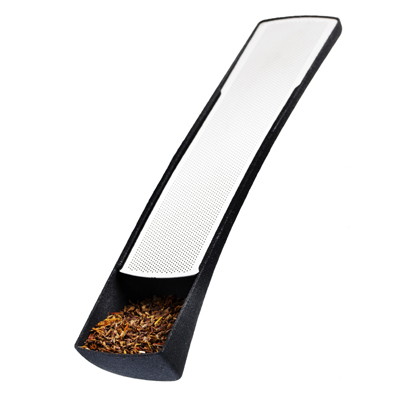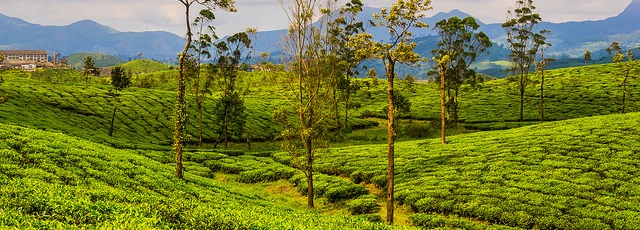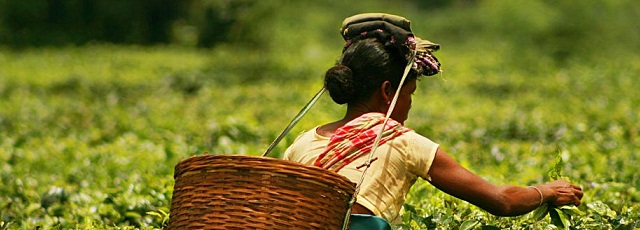The world of tea, tea processing, and tea drinking is endless and we can talk about it for a long, long time. In order to keep you informed, we gathered some of the most common questions about tea we get.
1. What is tea?
Let’s start with the basics. What actually classifies as tea? Tea is made from a shrub plant that originated in Asia called Camellia sinensis. More specifically, the tea is prepared from the leaves of the plant that had gone through processing. The cured leaves are brewed with water and in some cultures with milk in order to get a tasty, healthy drink. In the beginning, tea had more of a medicinal purpose, but now it is a beloved recreational drink, people consume for the simple pleasure of it. There is also herbal tea, and ice tea and other varieties, but this one is the classical one.

The Drosselmeyer Tea Infuser. Visit our Shop
2. What are the main types of tea?
Tea is categorized depending on the processing stages it had undergone:
- White – unoxidized
- Yellow – unoxidized and unwited. Undergoes through additional processing – yellowing
- Green – unoxidized and unwited
- Oolong – wilted, bruised and partly oxidized
- Black – wilted, fully oxidized sometimes goes through additional crushing
- Post-fermented – this is green tea that has been through fermentation
3. How long can tea be kept in the kitchen cupboard?
This depends on how well you store it, but tea usually lasts between 6-12 months. You can always tell if your tea has gone bad if it has lost the natural aroma, which will mean that the flavor is no longer as potent. In case you want to keep your tea for longer you might consider storing it in your fridge. But if you feel like your tea might not be that fresh, we have 20 ways you can use it instead of drinking it.
4. How to choose my tea?
There are a lot of ways to choose your type of tea. It depends on a lot of factors like do you like classical or herbal tea for example. Herbal tea comes from different plants like peppermint or chamomile. There are also flavored teas, that are made with classical tea, mixed with flavorings like mango, lemons, and strawberry. In case you like lighter types of tea – try a green or white tea. In case you are a lover of deeper tasting tea – Black is the best choice.
5. How to brew tea and what do I need to do it?
You will need:
- Loose tea leaves (depending on your taste) or tea in bags
- Teapot/ samovar or tea infuser
- Thermometer
- Your favorite tea cup
The water temperature is the key to the perfect cup of tea, so boil some water and be careful. Usually, it is 96 degrees for the black teas and 70 degrees for the green ones. Here is where your thermometer comes to help. Some modern kettles have the option to set in the temperature in advance. Never use re-boiled water as it has less oxygen and O2 is needed for the tea. First, put your loose tea or tea bags and into the teapot. The steeping time depends on the tea and most high-quality ones have instructions of a precise time they need. The more the tea sits inside the teapot, the stronger the tea. But be careful not to oversteep it as it will become bitter. Alternatively you can boil the water in the kettle and pour it into the cup and then use a tea infuser for loose tea. The type of cup you use is also important. Porcelain is the best and is also the original way tea was served in ancient China. In some parts of the world like England and India, they like to add milk to the tea as a last step.
7. What quantities of caffeine does the tea have?
Dry tea leaves contain 3% caffeine. The equivalent is 30-90mg in a cup of tea (250ml/8-oz). The exact amount depends on the tea and the way it is processed. For example, black tea has a significantly bigger percentage of caffeine (22-28 mg /1g to 11-20mg/1g in green tea)
8. Tea and weight loss
The past few years, green tea had gained popularity by being promoted as a miracle weight loss potion. But why is that? Firstly green tea has caffeine that had been known to aid in the battle to lose weight as a stimulant. It is also packed with antioxidants. It has metabolism boosting abilities thanks to an antioxidant called Epigallocatechin gallate (EGCG). Norephinereprin is a hormone that signals the fat cells to break fat down. That hormone, on the other hand, is stimulated by EGCG. A study has shown that green tea helps promote weight loss when we exercise as well. This type of tea also can significantly reduce the appetite.
9. Tea and pregnancy
It is known that some teas, more specifically the herbal types can give the much-needed minerals like calcium, magnesium, and iron to a pregnant woman. There are even specific teas, suitable for the young mother in order to stimulate milk producing. As most nonherbal teas contain caffeine, maybe it is a better idea to avoid them all together. A certain amount of caution is advised when consuming specific herbal teas, though most commercial ones should be fine. Teas with red raspberry leaves are a good choice for the pregnant woman and can possibly reduce the chance of urinary infections. It is also rich in iron. Peppermint tea is good for morning sickness as is ginger. Lemon Balm has calming and anti-insomnia effects.
10. Do all teas have the same effect on the health?
Tea has been used as a medicine for centuries for a reason. There are numerous studies about teas health benefits and tea consumption had been linked to avoiding cancer, heart illnesses, and diabetes.
- Green tea – The antioxidant it contains fights many types of cancer. It can reduce the possibility of developing Alzheimer, Parkinson decease, and stroke.
- Black tea – If you are a smoker, this type of tea is perfect for you as it might reduce the damages smoke-inhaling does to your lungs.
- White tea – It has cancer-fighting abilities.
- Oolong tea – Is good against the LDL bad cholesterol.
- Chamomile tea reduces the chance of vision loss due to diabetes.
- Hibiscuses tea lowers blood pressure.
- Peppermint tea – helps the digestion
Image Copyright: Tangaraj Kumaravel, License: CC BY 2.0



